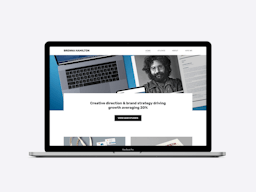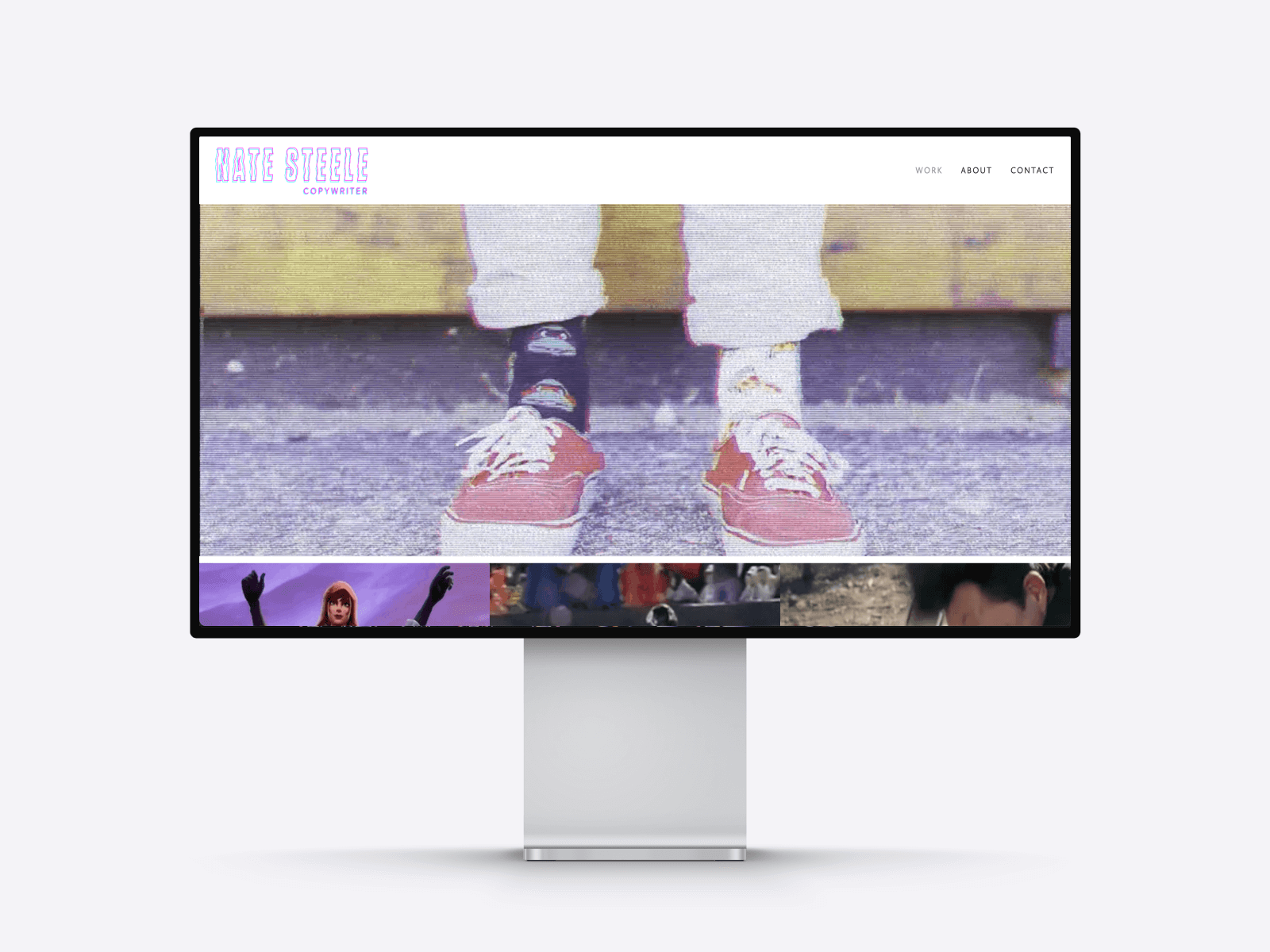Be organized. Make it easy. Ogilvy’s Nicky Lorenzo on Copywriter Portfolios
Graduating from Miami Ad School as an art director, Nicky Lorenzo had an unusual path to becoming a creative director and copywriter at one of the biggest advertising agencies, Ogilvy. Nicky talked to us about how she got to where she is now and shared the success story of the brilliant gender equality campaign she worked on for Mr. Muscle.
As a creative director, Nicky has seen dozens if not hundreds of copywriting portfolios, and shares insights on what they’re looking for in one. We discussed why it’s essential for copywriters to have a portfolio and how to create one that will get you hired.
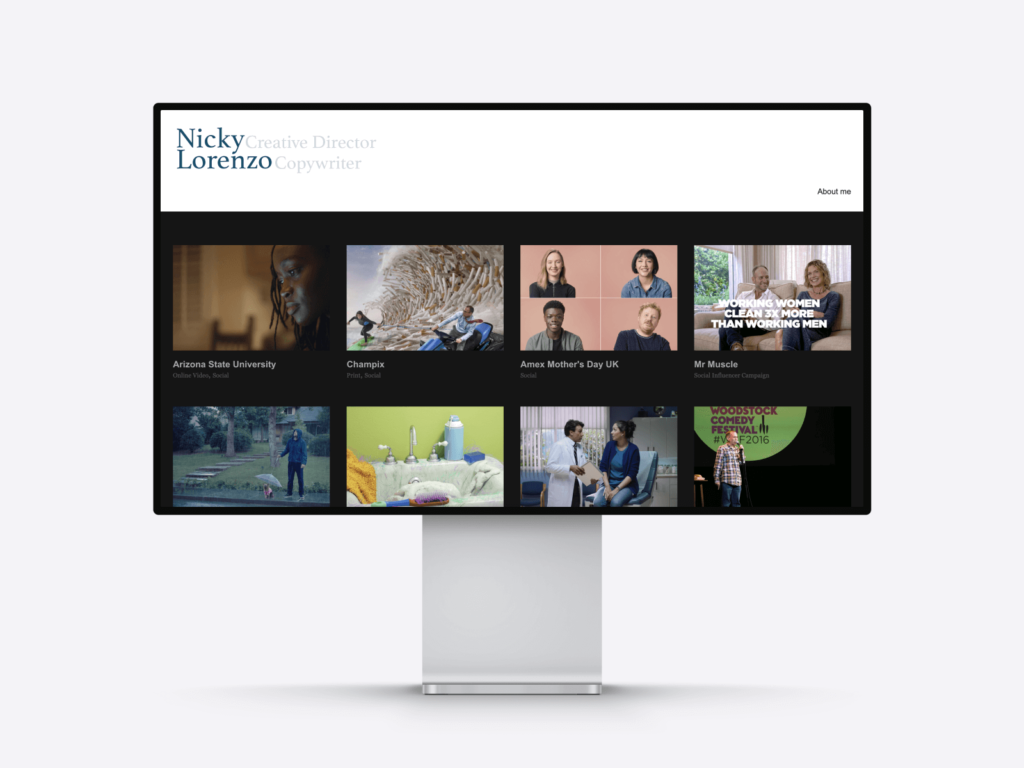
Nicky Lorenzo's portfolio
On your about page you wrote that you’d worked as a stadium vendor, a lingerie salesgirl, a daycare center teacher before. How did you get into copywriting?
It’s funny because I think I became a copywriter by accident, almost. In college, I was first an education major, so I worked as a daycare teacher. I also worked in marketing, then in retail and I liked it. I liked the sales aspect. So I thought: maybe I should go into marketing!
I changed my major to international marketing and I went into advertising and public relations. I think my love of sales and retail, and being a manager at a retail shop made me like marketing. The last class in my four-year degree was a creative communications class where we had to make a campaign. And I thought: “this is what I want to do, I want to make the ads!”. So my teacher suggested getting a BFA in writing or graphic design because then I could be an art director or copywriter.
I looked into portfolio schools and I went to Miami Ad School to be an art director. Then I ended up in New York City, working at a Hispanic ad agency because I speak Spanish and write in Spanish too. I had that dual currency of being American but also having a hand on that Latin culture. I represented the Hispanic market that they were communicating to.
And because we were a Hispanic market agency, we had to take the lead, as far as art direction goes, from the other, “general market” as they call it. As there wasn’t a lot of art direction, I was doing more ideating, coming up with ideas… And I was also writing a lot.
I just wrote more and more and as I grew, I realized that I wasn’t really an art director, I wasn’t using my art direction skills. Then I realized that I was more of a copywriter, so I just switched over. I switched over when I was an ACD.
I’ve always been a writer but thought I liked art direction better. Then I transitioned into writing and I think I’m a better writer than I ever was a designer.
As I saw from your portfolio you’ve had a lot of amazing ideas! Can you tell me about one of your favorite projects?
My favorite was one that we did for Mr. Muscle, which is a cleaning brand. They had a problem they wanted to solve, which was: how does a cleaning brand stand for gender equality? It was a very open brief, super exciting.
In Argentina they had a marketing problem, because not only were they saying “Hey, we help you clean”, they were also saying “Hey women, here’s a man telling you to clean”. Women were really pissed off and it felt almost like an anti-feminist brand.
We wanted to tell people that they, as a company, stand for equality: equal cleaning, equal division of work in the home. So we thought to ourselves: what if we could keep track of who’s cleaning with the bottle? The client said: “oh that’s fun, but how are you gonna make it work?”
Luckily at Ogilvy, we had a creative technologist who said we could make the bottle, and keep track of who’s cleaning with it by adding a fingerprint reader. It wasn't cost-effective, so we couldn’t just put it on Amazon or Target. Instead, we thought: what if we gave it to influencer couples who are in the kitchen and clean a lot? And see how it goes, who cleans more, the man or the woman.
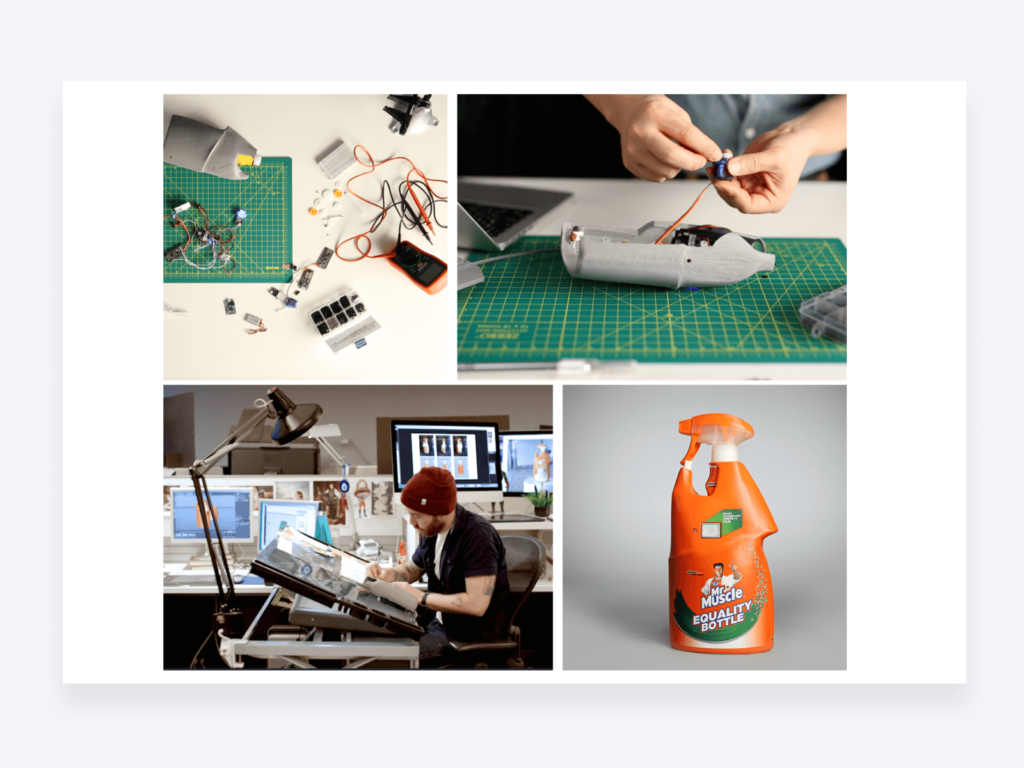
It was great! We got some influencer couples in Argentina, we registered their thumbprints so every time they would go clean, for about a month, they would have to put the thumbprint. And there was an app that would show us who was cleaning more. It was really cool because it was actual data.
And then we would use that to make a bunch of social posts. It was funny because people were commenting and women were saying “I need this in my house to show that I clean so much more than my husband.”
It was a great campaign and it was so successful that they picked it up in the UK. There we got Mo Farah, who’s an Olympian runner. We had a same-sex couple too, so it wasn’t even about gender, just about sharing the load. And we also had a traditional family of a husband, wife, and four kids. It was interesting to see the dynamic and if things were equal or not.
This was one of my favorite projects because it was like a really cool social experiment.
And when you get a new campaign, what is your creative process? How do you and your team get started working on it?
I take the brief and I read it a hundred times. I tend to be a very responsible creative, so I take that brief, that line, and write it on a piece of paper and paste it in front of myself. And then I constantly ask myself: is this idea answering that brief?
I think that comes from the fact that I’m a marketer, coming from a sales background. As much as I love what I’m creating and feel like it’s my baby - we’re selling a product, we’re selling an idea, a brand for a client who’s paying us. I don’t ever lose sight of that. That’s something that makes me a little different from the artsy-creative advertising world.
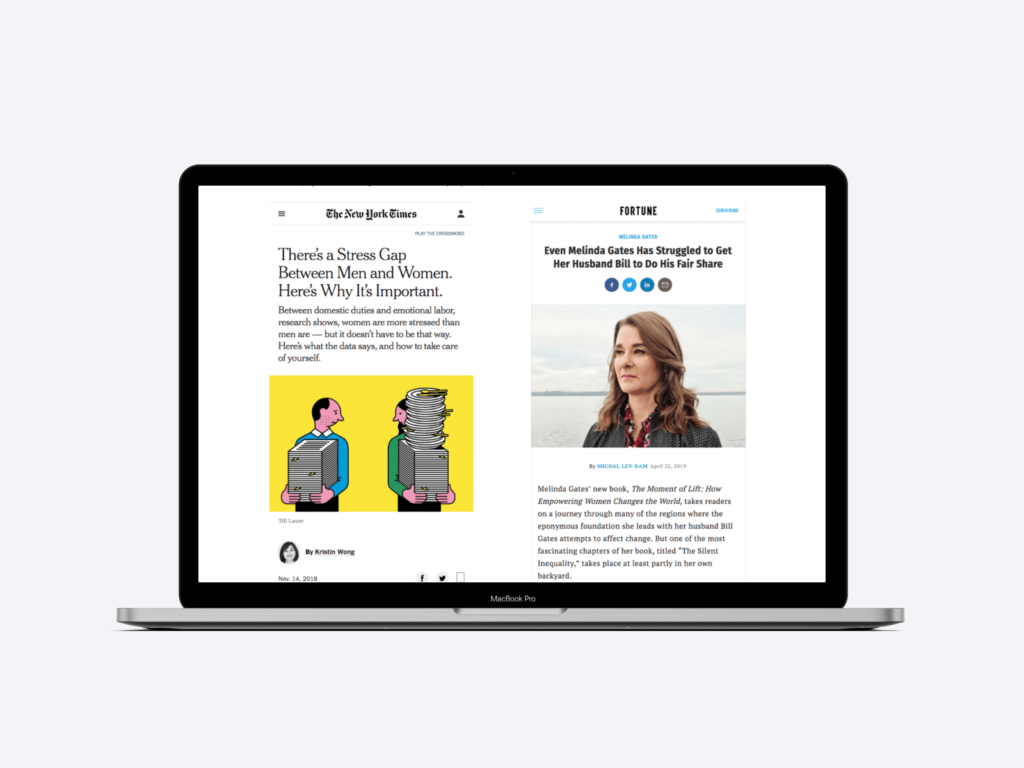
As a creative director, you also manage copywriters and creative teams. I was wondering if you also hire them?
Our team consists of my partner and me as creative directors and we have a junior team below us. They’re a junior writer and a junior art director. We have an ACD team that works mostly kinda beside us, we don’t directly direct them. We look at portfolios and we recommend people, but we don’t necessarily hire. If we need someone to our team, we definitely recommend people, but they bring people in for us and we get to meet them, but we don’t get to really choose. Usually, the people that we hire are interns who have been here for 6 months from Miami Ad School.
And when you’re looking for interns or juniors, what are the skills that you’re looking for? What are the skills you think a successful copywriter should have?
They need to love advertising. It’s very easy to be cynical in advertising because the world is ending, there’s a pandemic and we’re not curing cancer, but... You know what? You didn’t get into this to do all those things, you got into this to sell.
And there’s a select few, who like advertising. Who, when they see a funny ad, they share it with their families. When they see a Nike ad, they cry, because they feel it’s really communicating to them. You have to be about that. If you’re just doing it because you think you’re gonna come and create and be an artist - no. It’s about selling and it’s about selling in a way that’s effective.
I think the best people that do well are people who are true lovers. They’re reading AdWeek and they’re seeing what other countries are doing. It's the people who are looking at awards ceremonies and seeing what the winners are from other countries. They’re learning. Because at the end of the day there’s a formula to making ads. But it’s about how you give it a spin. How do you put your own perspective and where you come from into those ideas.
That’s my advice. What I look for is people who actually wanna be doing this.
And do you think that having a portfolio is important for copywriters?
You have to have one. It’s not important, it’s like... you have to have one. It’s not even a question. If you don’t have a portfolio, what are you even doing? Unless you have a friend who works at the agency that recommends you, you need a portfolio to get in. To even get looked at.
And what do you think makes a good copywriting portfolio? And how do you think people could translate that passion and enthusiasm you mentioned into a portfolio or website?
What makes a good portfolio is having your ideas come through. Start with the ideas you like the best and organize them in a way that’s clear.
One thing that kills me is when I see portfolios that have a really funny and creative thing at the beginning and the work is nowhere to be found. I love personality, but leave that for your about page. Or if you have just like a fun headline at the top of your website, because you’re a writer, that’s great. Draw me in with something that’s interesting and funny - but then show me your work! The work should speak for itself.
Just have it organized in a way that makes it easy for creative directors to look at the work. And make sure you’re not just putting stuff up there, but also give a little explanation. What was the brief? What did you try to achieve?
Be organized. Make it easy.
My next question would have been if there are any typical mistakes you see in portfolios, but you kinda just answered that as well.
But is there anything else that pops into your mind that you often see in portfolios that you don’t really like?
Just trying to be overly funny, silly, or creative with the presentation of it, when people just want to see your work. That’s it. Especially as a junior coming in, just show us what you got.
My last question is actually for juniors. What would you advise junior copywriters that don’t have a lot of real-life projects to showcase in a portfolio? What can they do to still catch your attention?
I went to a portfolio school a long time ago. I’ve heard that now they’re very expensive and the structure’s very different. So I don’t know if I’d recommend going to a portfolio school. Especially if you’re going to be a writer or designer, you need to work on your craft. I would almost rather say: go do a creative writing course. Learn your skill, so that when you do have ideas you can put them into something.
I have a lot of people coming from portfolio schools who say “Yeah, I got great ideas” and I’m like “Yeah, but you can’t write a headline.” You need to know your basics, so you can then take that and create your executions with your creative concept.
I think that portfolio schools try to teach you to think big, but they don’t teach you how to execute it. Work on your craft. I think that’s what I can advise juniors.
And for filling their portfolio, juniors can go to Linkedin and reach out to people, who can give them tips. You can find an art director partner, with whom you can start working on ideas and putting together a little mini portfolio. Or go to Ad House and take a course for two months, and it will just give your briefs to work from. Look for an internship! All those things are going to help you get a book together. But they need to have a book. You cannot just wake up one day and say “Oh, I’m gonna be a copywriter”.
Thank you for the interview, Nicky!
Don't forget to check out Nicky's portfolio here and follow her on Twitter.
Build your own copywriter portfolio with Copyfolio!
Copyfolio is a portfolio builder tool that was designed for writers. It makes it incredibly quick and easy to create a simple yet stunning portfolio to wow creative directors and potential clients. If you have your project materials ready, you can build your portfolio website from start to finish in 10-15 minutes. Here's how it works:
- Create an account: no passwords needed —you can choose to sign in with Google or Facebook, or ask for a magic link.
- Fill out the simplest form: all you need to write is your name and choose your profession.
- Choose a template that you like the look of. Don't worry, you can change it later anytime, without having to worry about losing anything. Your content is always safe.
- Take a look at the site we created for you. Every new Copyfolio site comes pre-filled with sections, text and images, to give you an idea of what goes where. But if you want, you can of course just delete them all and start from scratch.
- Customize the look with a single click. With one-click color palettes and font presets, you can change the look of your site in a second. It'll update everywhere and guarantee that the overall style will stay cohesive.
- Add your projects and copy. The last thing to do is write. About yourself, about your projects. Embed videos, add images, and turn them into professional-looking mockups with the click of a button.
And there you have it: a stunning site to showcase the best copywriting projects you have under your name. Try Copyfolio today and create your own copywriting portfolio website!
